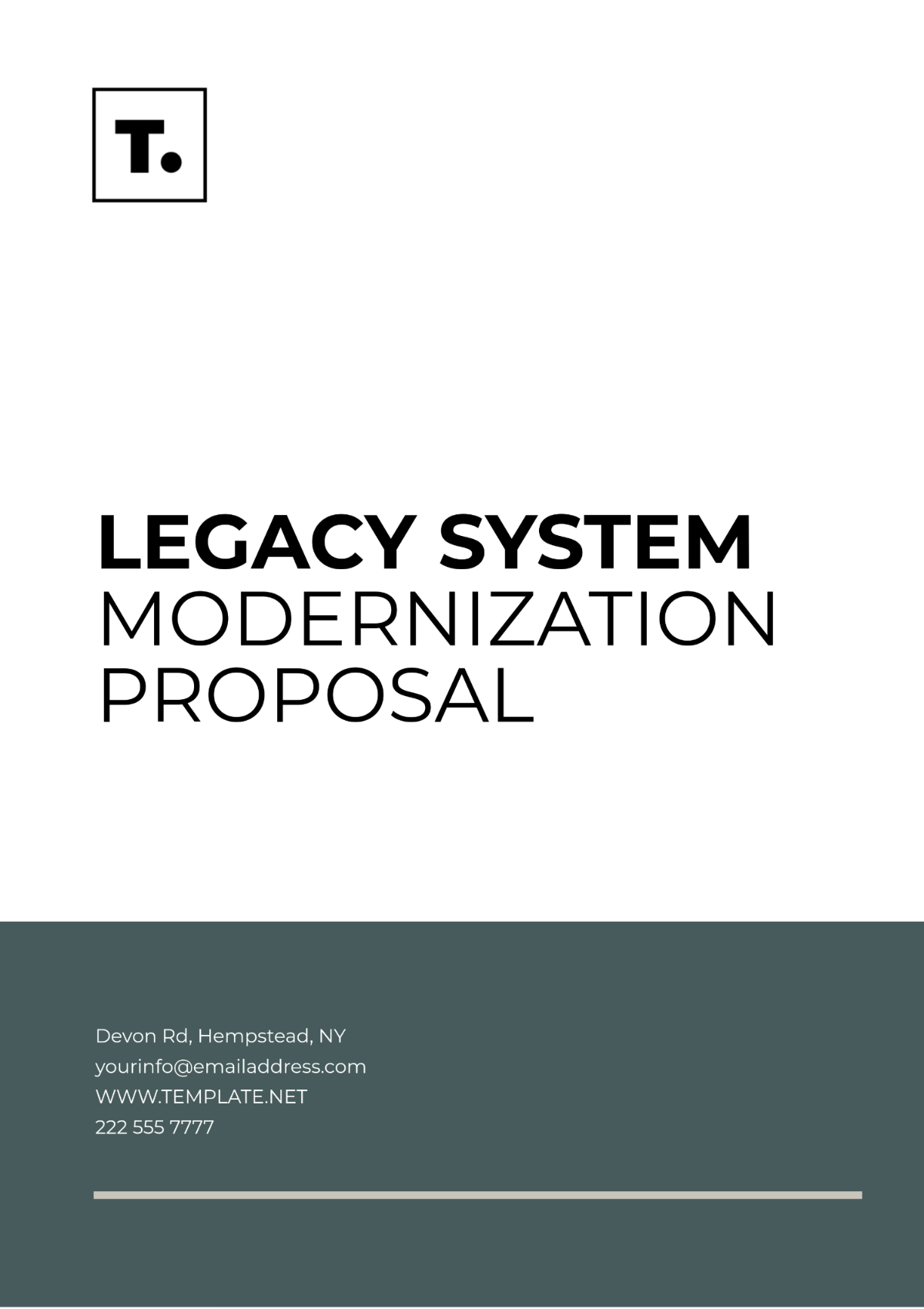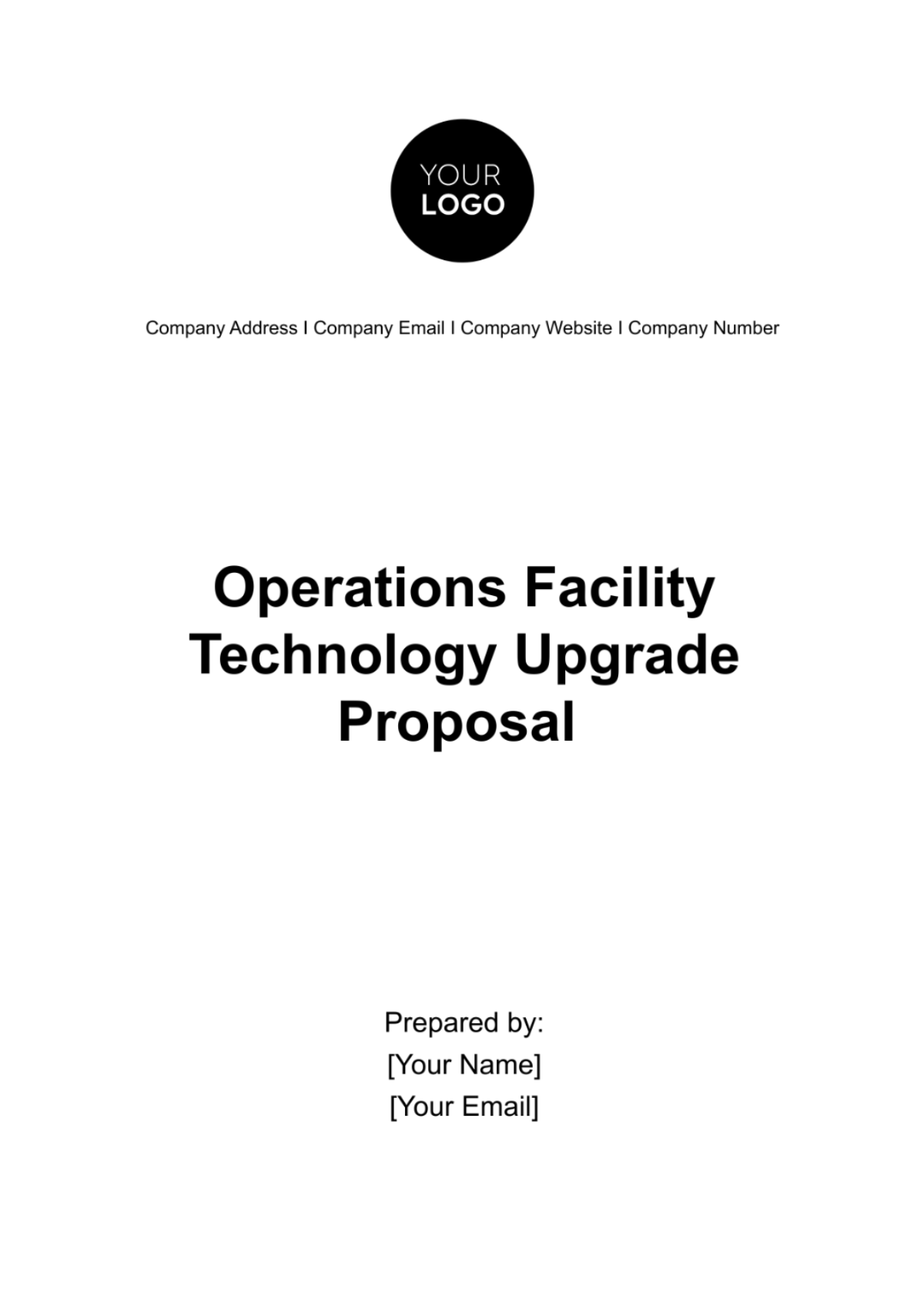I. Executive Summary
The Administration IT Infrastructure Proposal for Office presents a strategic plan to revolutionize [Your Company Name]'s operational efficiency and security through comprehensive upgrades to its IT infrastructure. In an era defined by rapid technological advancements and evolving business landscapes, it is imperative for organizations to proactively adapt and innovate to maintain a competitive edge. This proposal outlines a meticulously crafted roadmap designed to address the current challenges faced by our organization and capitalize on emerging opportunities.
Through a multifaceted approach encompassing hardware modernization, software optimization, and network fortification, we aim to establish a robust foundation that not only meets our present needs but also anticipates future requirements. By investing in state-of-the-art technologies and industry-leading solutions, we aspire to enhance employee productivity, streamline business processes, and foster a culture of innovation and collaboration. Moreover, by prioritizing security and scalability, we seek to mitigate potential risks and ensure the integrity and resilience of our infrastructure in the face of evolving threats and demands.
Ultimately, this proposal represents a strategic investment in [Your Company Name]'s future success, enabling us to leverage technology as a catalyst for growth, differentiation, and sustained competitive advantage in today's dynamic business environment.
II. Introduction
In today's digital age, the role of IT infrastructure transcends mere support functions to become a cornerstone of organizational success. As [Your Company Name] embarks on its journey of expansion, innovation, and transformation, the need to modernize and optimize our IT infrastructure has never been more critical. Our existing infrastructure, while functional, may no longer suffice to meet the evolving demands of a dynamic business landscape characterized by rapid technological advancements, shifting market dynamics, and increasingly sophisticated cyber threats.
This proposal represents a proactive response to this imperative, articulating a comprehensive strategy to revitalize [Your Company Name]'s IT infrastructure for enhanced performance, resilience, and security. By embracing a forward-thinking approach that integrates cutting-edge hardware, robust software solutions, and scalable network architectures, we aim to empower our organization to thrive amidst uncertainty and complexity.
Through this initiative, we seek not only to address the immediate challenges posed by outdated systems and processes but also to lay the groundwork for future innovation and growth. By fostering a culture of continuous improvement and adaptability, we are poised to unlock new opportunities, drive operational excellence, and deliver unparalleled value to our customers, partners, and stakeholders.
III. Current Infrastructure Assessment
A comprehensive evaluation of [Your Company Name]'s current IT infrastructure reveals several areas in need of improvement and optimization:
Hardware: The existing hardware components, including servers, workstations, and networking equipment, are outdated and nearing the end of their operational lifespan. This outdated hardware not only hampers performance but also increases the risk of system failures and downtime.
Software: The software environment within the organization is characterized by a mix of outdated applications and operating systems. These legacy systems are not only vulnerable to security threats but also lack the features and functionalities required to support modern business operations.
Network Infrastructure: The network infrastructure suffers from bottlenecks and inefficiencies, resulting in slow data transfer speeds and intermittent connectivity issues. Additionally, the lack of redundancy and scalability limits the organization's ability to adapt to changing demands and accommodate future growth.
Security: The current security posture of the organization is suboptimal, with outdated security protocols and insufficient controls leaving the network vulnerable to cyber threats and data breaches. The absence of robust backup and disaster recovery mechanisms further exacerbates the risk of data loss and operational disruptions.
IV. Proposed Infrastructure Upgrades
A. Hardware Upgrades
The proposed hardware upgrades aim to modernize [Your Company Name]'s infrastructure and enhance performance, reliability, and scalability. The following table outlines the key hardware components to be upgraded:
Hardware Component | Description | Quantity | Estimated Cost per Unit | Total Estimated Cost |
|---|---|---|---|---|
Servers | High-performance servers for data hosting and processing | [3] | [$8,000] | [$24,000] |
Workstations | Modern workstations for enhanced productivity | [20] | [$2,000] | [$40,000] |
Network Switches | Gigabit switches for improved network performance | [4] | [$1,500] | [$6,000] |
Firewall | Next-generation firewall for enhanced security | [1] | [$5,000] | [$5,000] |
The servers will be equipped with the latest processors and sufficient RAM to handle intensive data processing tasks efficiently. Workstations will feature high-resolution displays, fast processors, and ample storage to facilitate multitasking and resource-intensive applications. The network switches will support gigabit Ethernet connections to ensure high-speed data transfer within the local network. The next-generation firewall will provide advanced threat detection and prevention capabilities to protect the network from cyber attacks and unauthorized access.
B. Software Upgrades
The proposed software upgrades include:
Operating System: Upgrade to the latest version of Windows 10 Enterprise for improved security features and performance enhancements. This will ensure compatibility with modern hardware and software applications while providing robust security against cyber threats.
Productivity Suite: Deployment of Microsoft 365 Business Premium, which includes essential productivity tools such as Microsoft Office apps, Exchange email hosting, and OneDrive cloud storage. This suite will enable seamless collaboration, document sharing, and email communication across the organization.
Antivirus Software: Implementation of Symantec Endpoint Protection with advanced threat detection capabilities to safeguard against malware, ransomware, and other cyber threats. This antivirus solution will provide real-time protection for endpoints, servers, and email communications, helping to prevent security breaches and data loss.
C. Network Enhancements
The proposed network enhancements aim to optimize [Your Company Name]'s network infrastructure for improved performance, reliability, and security. Key initiatives include:
Bandwidth Upgrade: Upgrade to a fiber optic internet connection with a bandwidth capacity of 1 Gbps to accommodate increasing data traffic and ensure faster download and upload speeds. This upgrade will provide a more robust and reliable internet connection, supporting the organization's growing reliance on cloud-based applications and services.
Wireless Access Points: Installation of 6 additional wireless access points strategically positioned throughout the office premises to provide seamless Wi-Fi coverage and eliminate dead zones. This will ensure uninterrupted wireless connectivity for employees and visitors, enhancing productivity and collaboration across the organization.
V. Implementation Plan
A. Timeline
The implementation plan will be executed according to the following timeline:
Task | Start Date | End Date |
|---|---|---|
Hardware Procurement | [Date] | [Date] |
Software Installation and Configuration | [Date] | [Date] |
Network Infrastructure Deployment | [Date] | [Date] |
Testing and Quality Assurance | [Date] | [Date] |
Training Sessions | [Date] | [Date] |
Go-Live | [Date] | [Date] |
B. Responsibilities
The responsibilities for the implementation of the proposed infrastructure upgrades are outlined as follows:
[Your Company Name] IT Team: Procurement, installation, and configuration of hardware and software components. This includes setting up servers, workstations, network switches, and the firewall, as well as installing and configuring the operating system, productivity suite, and antivirus software.
[Partner Company Name]: Deployment and configuration of network infrastructure upgrades, including the bandwidth upgrade and installation of wireless access points. This will involve configuring network switches, routers, and access points, as well as testing and optimizing network performance.
Training Department: Conducting training sessions for employees on new software applications and hardware functionalities. This will ensure that employees are familiar with the new technology and can effectively utilize it to enhance their productivity and collaboration.
VII. Benefits
The proposed IT infrastructure upgrades offer numerous benefits to [Your Company Name] and its stakeholders:
Improved Performance: The modernized hardware and software components will significantly enhance system performance, reducing latency and improving response times for critical business applications. This will lead to increased productivity and efficiency across the organization.
Enhanced Security: The deployment of next-generation firewall and antivirus software will bolster [Your Company Name]'s cybersecurity posture, mitigating the risk of data breaches, malware infections, and other cyber threats. This will safeguard sensitive information and protect the organization's reputation and integrity.
Scalability: The upgraded network infrastructure will be designed with scalability in mind, allowing [Your Company Name] to easily accommodate future growth and expansion. This flexibility will ensure that the IT infrastructure remains aligned with the evolving needs of the organization.
Improved Collaboration: The implementation of Microsoft 365 Business Premium will facilitate seamless collaboration and communication among employees, regardless of their location or device. This will foster greater teamwork and innovation within the organization, driving overall performance and competitiveness.
Cost Savings: While there is an initial investment required for the infrastructure upgrades, the long-term benefits, including improved efficiency, reduced downtime, and enhanced security, will result in significant cost savings over time. Additionally, the scalability of the infrastructure will minimize future capital expenditures associated with expansion and upgrades.
VIII. Conclusion
The proposed IT infrastructure upgrades represent a strategic investment in [Your Company Name]'s future success and competitiveness. By modernizing hardware, optimizing software, and strengthening network security, [Your Company Name] will be better positioned to meet the challenges of today's dynamic business environment and capitalize on emerging opportunities.
These upgrades will not only improve performance, security, and scalability but also foster collaboration, innovation, and cost-effectiveness. With a robust IT infrastructure in place, [Your Company Name] will be empowered to achieve its strategic objectives, drive growth, and deliver exceptional value to its customers, employees, and stakeholders.
As [Your Company Name] embarks on this journey of transformation, it is essential to remain committed to ongoing monitoring, evaluation, and optimization to ensure that the IT infrastructure continues to meet the evolving needs of the organization. By embracing a culture of continuous improvement and innovation, [Your Company Name] will continue to thrive and succeed in the digital age.























